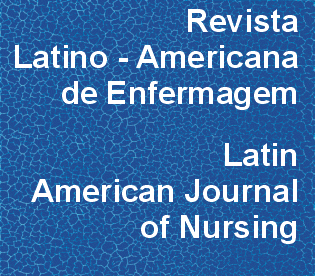Nurses and care delivery to elderly women: a social phenomenological approach
DOI:
https://doi.org/10.1590/S0104-11692012000500010Keywords:
Nursing, Health of the Elderly, Nursing Care, Comprehensive Health Care, Qualitative ResearchAbstract
OBJECTIVE: To understand how nurses see care delivery to elderly women. METHODS: In this phenomenological study, ten nurses working at Primary Health Care Units were interviewed between September 2010 and January 2011. RESULTS: In care delivery, nurses consider the elderly women's knowledge background and biographical situation, and also value the family's participation as a care mediator. These professionals have the acuity to capture these women's specific demands, but face difficulties to deliver care to these clients. Nurses expect to deliver qualified care to these women. CONCLUSION: The theoretical and methodological approach of social phenomenology permitted revealing that the nurse designs qualified care to elderly women, considering the possibilities in the context. This includes the participation of different social actors and health sectors, assuming collective efforts in action strategies and professional training, in line with the particularities and care needs of elderly women nurses identify.Downloads
Download data is not yet available.
Downloads
Published
2012-10-01
Issue
Section
Original Articles
License
RLAE’s authorship concept is based on the substantial contribution by each of the individuals listed as authors, mainly in terms of conceiving and planning the research project, collecting or analyzing and interpreting data, writing and critical review. Indication of authors’ names under the article title is limited to six. If more, authors are listed on the online submission form under Acknowledgements. The possibility of including more than six authors will only be examined on multicenter studies, considering the explanations presented by the authors.Including names of authors whose contribution does not fit into the above criteria cannot be justified. Those names can be included in the Acknowledgements section.
Authors are fully responsible for the concepts disseminated in their manuscripts, which do not necessarily reflect the editors’ and editorial board’s opinion.
How to Cite
Nurses and care delivery to elderly women: a social phenomenological approach. (2012). Revista Latino-Americana De Enfermagem, 20(5), 888-895. https://doi.org/10.1590/S0104-11692012000500010



